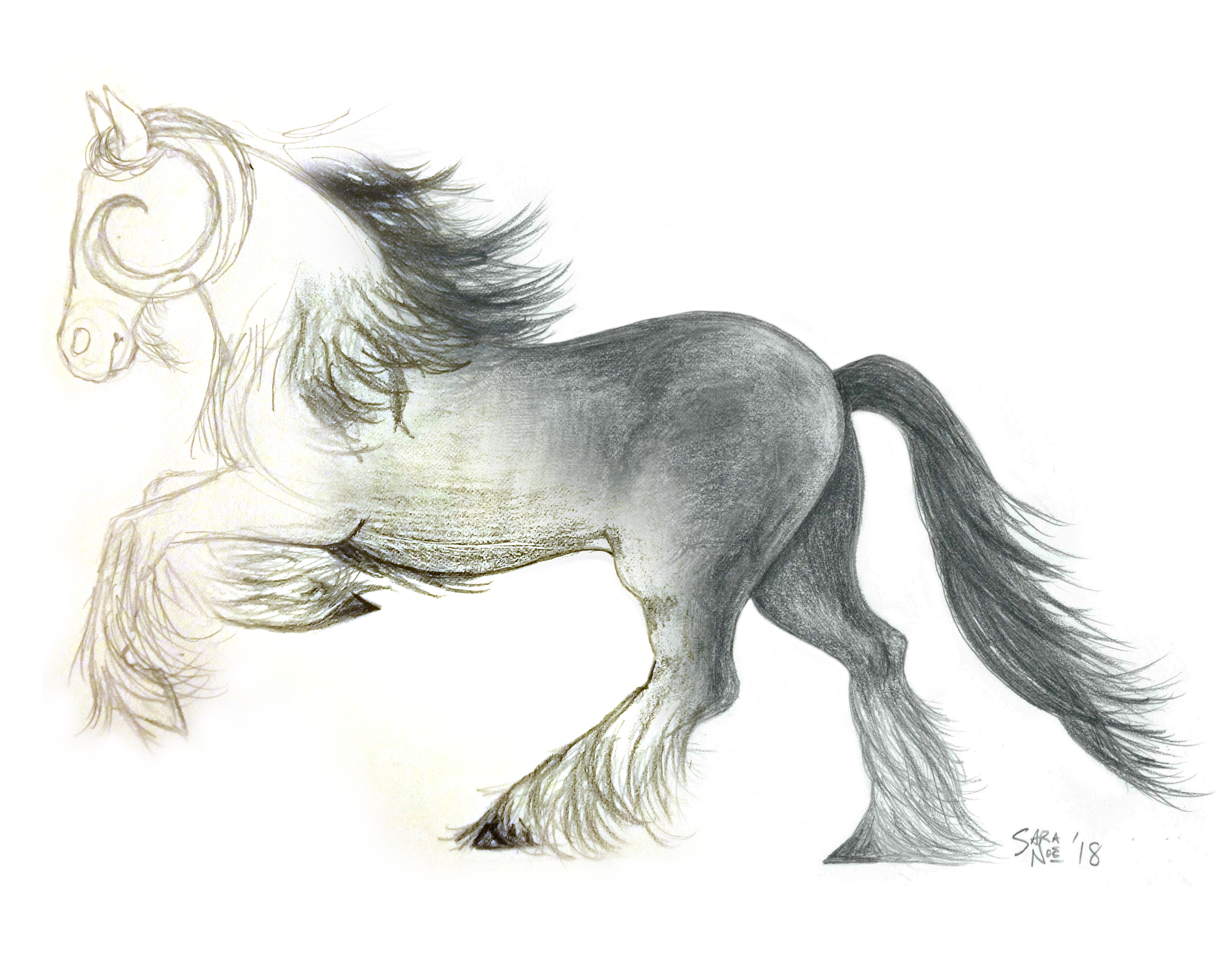One of many projects I’m working on is an illustrated guide to Avilésor, the fantasy realm in my upcoming book series. The ideal publication timetable for this guide would take place between Book III and Book IV of the series, so we’re still a ways off considering Book I will be making its debut this fall. Unicorns are well established, with sixteen different breeds listed in the guide based on horse breeds ranging from palominos to bays to paints, et cetera.
But what about a draft horse? Is that just a big unicorn?
I decided to change the design a bit. Think of a bilocorn as the unicorn’s cousin; picture a Clydesdale with the mane of a lion and the horns of a bighorn sheep.
 First step: find a guide to reference. Sometimes a drawing will use several different images of animals in different positions—one for a head tilted a certain way, another for the body, yet another for lighting and shadows. In this case, I found a painting of a Clydesdale in a pose I found to be a close enough match for the image in my head.
First step: find a guide to reference. Sometimes a drawing will use several different images of animals in different positions—one for a head tilted a certain way, another for the body, yet another for lighting and shadows. In this case, I found a painting of a Clydesdale in a pose I found to be a close enough match for the image in my head.
I prefer to draw animals facing left, which required flipping the guide image in Photoshop. There is no tracing involved with the guide; it’s mostly used for proportions during the initial planning and sometimes for shading after the base coat has been applied.
A horse begins with four circles—two for the head, one for the chest, and one for the hindquarters. The circles are connected by the outline that will determine the shape of the creature. It’s loose, and it’s basic. It certainly doesn’t look like much in the beginning!
From there comes a lightly-shaded base coat. Contours are important here. The pencil strokes generally follow the same direction as the fur. When the crosshatch is added, the lines will be curved rather than straight. This helps to add dimension, especially to rounded areas like the belly. The shadows come next.
Highlights are equally important, and that’s where the eraser comes into play. Sections are cleared away, and a couple of fingers effectively blend the edges for a subtler transition. There’s a lot of back and forth play here to make both the shadows and highlights complement each other just right. Then, a mechanical pencil is used for the texture, fine details, and final outlining on the edges.
Ta-da! A bilocorn is born.
I'm an award-winning fantasy author, artist, and photographer from La Porte, Indiana. My poetry, short fiction, and memoir works have been featured in various anthologies and journals since 2005, and several of my poems are available in the Indiana Poetry Archives. The first three novels in my Chronicles of Avilésor: War of the Realms series have received awards from Literary Titan.
After some time working as a freelance writer, I was shocked by how many website articles are actually written by paid "ghost writers" but published under the byline of a different author. It was a jolt seeing my articles presented as if they were written by a high-profile CEO or an industry expert with decades of experience. I'll be honest; it felt slimy and dishonest. I had none of the credentials readers assumed the author of the article actually had. Ghost writing is a perfectly legal, astonishingly common practice, and now, AI has entered the playing field to further muddy the waters. It's hard to trust who (or what) actually wrote the content you'll read online these days.
That's not the case here at On The Cobblestone Road. I do not and never will pay a ghost writer, then slap my name on their work as if I'd written it. This website is 100% authentic. No outsourcing. No ghost writing. No AI-generated content. It's just me... as it should be.
If you would like to support my work, check out the Support The Creator page for more information. Thank you for finding my website! 🖤



One thought on “The Art Process: Creating a Bilocorn”
Awesome Sara!
Comments are closed.